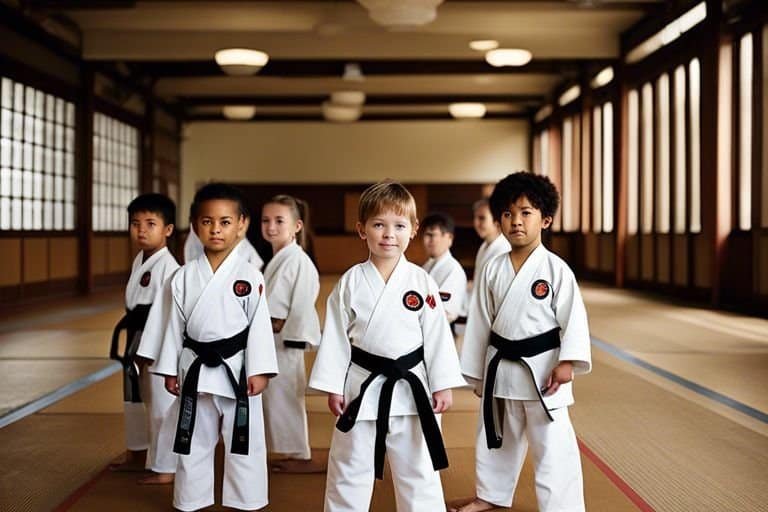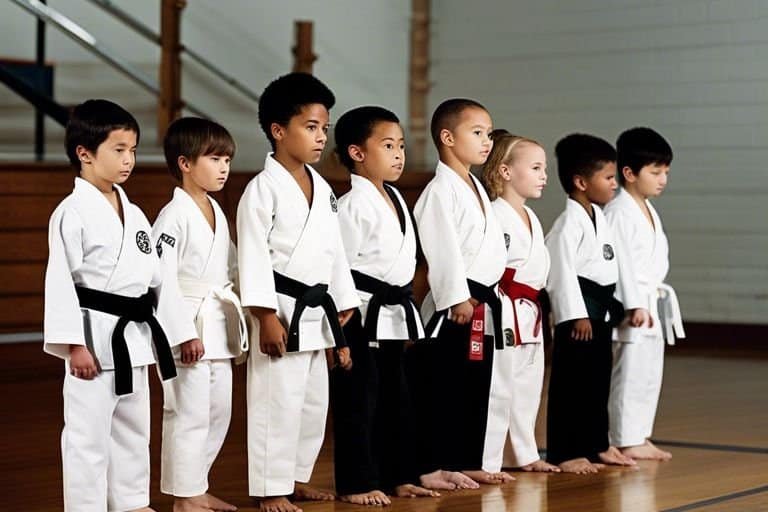Prepare to embark on an extraordinary journey as we delve into the transformative path of karate for kids, from the humble beginnings of a white belt to the prestigious status of a black belt. This ancient martial art form not only instills discipline, focus, and respect in its practitioners but also equips them with essential self-defense techniques that are crucial in today’s world. Join us as we uncover the grueling training, mental fortitude, and physical prowess required to tread this path of mastery, and witness the incredible growth and development experienced by children along the way.
Key Takeaways:
- Discipline and Self-Control: Karate helps kids develop discipline and self-control through the practice of controlled movements and focus on respect for authority.
- Physical and Mental Growth: The journey from white belt to black belt fosters physical fitness and mental strength, helping kids build confidence and resilience.
- Goal Setting and Achievement: Karate teaches kids the value of setting and achieving goals, as they progress through the belt levels and face new challenges.

The Basics of Karate for Beginners
While starting the journey of Karate for kids, it is important to understand the basics of this traditional martial art. Karate is not just about learning how to throw punches and kicks, but it also involves discipline, focus, and respect. The first step in learning Karate is to familiarize yourself with the essential elements, such as the karate gi, fundamental stances, and techniques.
Understanding the Karate Gi
Karate is practiced in a traditional uniform called a karate gi, which consists of a jacket, pants, and a belt. The karate gi is not just a uniform, but it symbolizes the practitioner’s commitment to the art and represents their journey from white belt to black belt. The white color of the gi signifies purity and the beginner’s mindset, while the black belt represents the highest level of mastery and knowledge in Karate.
With fundamental stances and techniques, students will learn the foundation of Karate movements and postures, which are essential for developing strength, balance, and agility. By mastering these fundamental stances and techniques, students will build a strong foundation to progress to advanced levels of Karate training. Karate stances such as zenkutsu dachi (front stance), kiba dachi (horse stance), and kokutsu dachi (back stance) are fundamental postures that lay the groundwork for powerful strikes and effective defensive movements.
Karate is a discipline that requires dedication and perseverance, and mastering the fundamental stances and techniques is crucial for students to progress in their training. By understanding and practicing these foundational elements, students can build a solid framework for their journey from white belt to black belt, paving the way for growth and development in the art of Karate.

Progressing Through the Ranks: From White to Black Belt
Clearly, progressing through the ranks in karate from a white belt to a black belt is a significant and challenging journey for kids. It requires dedication, discipline, and perseverance. Each belt represents a different level of skill and knowledge, and achieving the coveted black belt is a testament to a child’s hard work and commitment to the art of karate.
Overview of the Karate Belt System
To understand the journey from white to black belt, it is essential to have a grasp of the karate belt system. In most traditional karate styles, the belt colors progress from white to black, with a series of colored belts in between, each representing a specific set of skills and knowledge. As a child advances through the ranks, they must demonstrate proficiency in various techniques, forms, and sparring, as well as embody the core tenets of karate, such as respect, discipline, and humility.
Key Milestones in the Journey
Milestones along the way to black belt include achieving the first colored belt, typically the yellow belt, which signifies the beginning of the student’s progression. The transition from a lower to a higher colored belt requires mastering new techniques and forms, and demonstrates the student’s growth and development in their karate journey. Each belt test is a significant milestone, requiring dedication and hard work to advance to the next level.
This journey from white to black belt is not just about physical skill, but also about mental fortitude and character development. It teaches children the value of perseverance, discipline, and respect, instilling important life skills that they will carry with them beyond the dojo. The process fosters confidence and self-esteem, as children overcome challenges and push past their limits to reach the ultimate goal of obtaining a black belt.
Enhancing Skills and Building Character
Not just a physical activity, karate is an art form that focuses on enhancing skills and building character. It teaches children the importance of discipline, respect, and perseverance, helping them develop into well-rounded individuals.
Developing Discipline and Respect
Developing discipline and respect is at the core of karate training for kids. Through the strict codes of conduct and practicing proper etiquette, children learn to respect their instructors, peers, and the art itself. They also develop the self-discipline required to practice and improve their skills, which extends to other areas of their lives.
Mastering Kata and Kumite
Kumite, or sparring, and kata, or forms, are two essential components of karate that help children master the art. Kumite allows them to apply their techniques in a controlled environment, teaching them how to defend themselves and think quickly. Meanwhile, kata helps them master precise movements and develop their mental focus, creating a well-rounded karate practitioner.
With kumite and kata, children learn to apply their skills in real-life situations while honing their physical and mental prowess. These components also instill confidence and determination, helping children overcome challenges both inside and outside the dojo.
Beyond Black Belt
For many young martial artists, achieving the rank of black belt is a significant milestone in their karate journey. It represents years of hard work, dedication, and perseverance. However, the journey does not end at black belt; in fact, it is just the beginning of a new chapter in their martial arts education.
Continuing the Journey of Learning
Black belt is not the end of the road, but rather the beginning of a new phase in the journey of learning. Beyond black belt, students have the opportunity to delve deeper into the art of karate, honing their skills and knowledge with advanced techniques and training. This phase is marked by a commitment to continuous improvement and a willingness to push oneself beyond perceived limits. It is a time for black belts to embrace new challenges and further refine their martial arts abilities, embodying the principles of discipline, respect, and humility.
The Role of Teaching and Leadership in Martial Arts
Journeying beyond black belt also brings with it the opportunity to take on the role of teaching and leadership in martial arts. As black belts, students have the responsibility to serve as mentors to lower-ranking students, guiding and inspiring them on their own paths to black belt. Leadership skills, such as communication, patience, and empathy, become integral as black belts take on the role of instructors, imparting their knowledge and wisdom to the next generation of martial artists. This phase emphasizes the importance of giving back to the community and contributing to the growth and development of others, instilling a sense of purpose and fulfillment in the martial arts journey.
For instance, black belts often assist in leading classes, organizing events, and participating in community outreach initiatives, demonstrating the positive impact they can have as role models and leaders both inside and outside the dojo.
FAQ
Q: What is the recommended age for kids to start learning karate?
A: The recommended age for kids to start learning karate is generally around 5 or 6 years old. At this age, children have developed the necessary attention span and motor skills to begin their karate journey.
Q: How long does it take for a child to progress from a white belt to a black belt in karate?
A: The time it takes for a child to progress from a white belt to a black belt in karate varies based on the individual’s dedication, practice, and natural ability. Typically, it can take anywhere from 3 to 5 years for a committed student to achieve a black belt.
Q: Is karate training safe for kids?
A: When taught by qualified instructors in a controlled environment, karate training is generally safe for kids. Proper supervision, the use of protective gear, and age-appropriate techniques ensure that children can learn karate safely while minimizing the risk of injury.
Q: How does karate benefit kids besides physical fitness?
A: In addition to physical fitness, karate offers a range of benefits for kids, including increased confidence, discipline, respect for others, and improved focus and concentration. Through karate training, kids also learn valuable self-defense skills and develop a strong sense of determination and perseverance.
Q: What can parents do to support their child’s karate journey?
A: Parents can support their child’s karate journey by demonstrating enthusiasm and encouragement, attending their child’s classes and events, and communicating with their child’s instructors to stay informed about their progress. Additionally, parents can help create a positive and consistent practice environment at home to reinforce the lessons learned in karate class.



